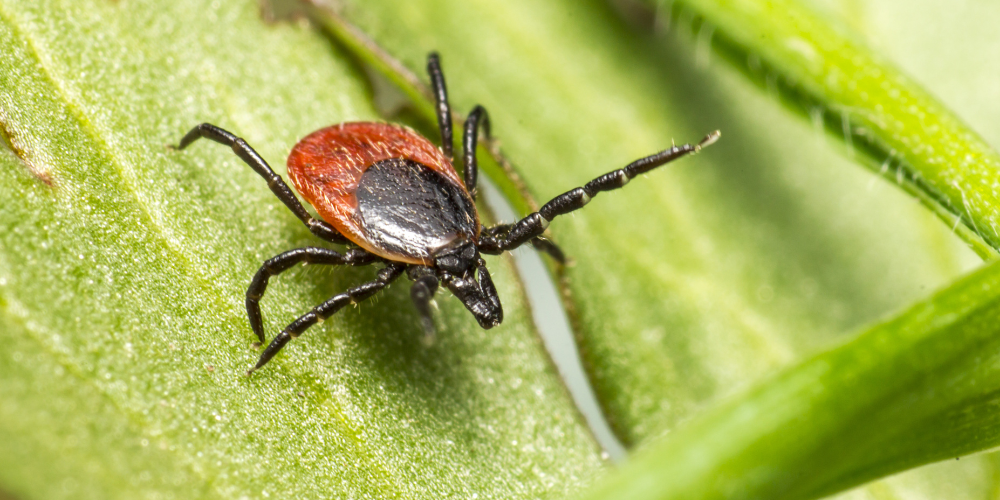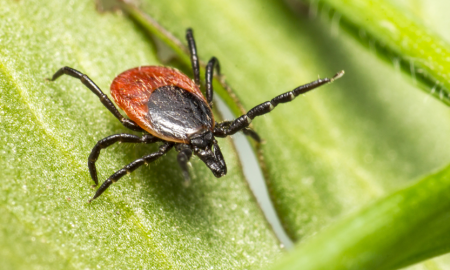
What Is Lyme Disease? Early Signs, Diagnosis & Prevention

Spending time outdoors can offer countless benefits, but it can also come with unexpected risks—like Lyme disease. This bacterial infection, passed to humans through the bite of infected black-legged ticks, often begins without warning.
Despite its subtle entry, Lyme disease can cause lasting health problems if not identified and treated early. With tick populations growing across suburban neighborhoods and wooded areas alike, it’s important to know what signs to look for and how to respond.
What Causes Lyme Disease?
Lyme disease starts when a tick infected with Borrelia burgdorferi bacteria bites and attaches to the skin. While not every tick carries the bacteria, around 1 to 5% of bites may lead to an infection, depending on the region. In certain areas, infection rates can climb even higher. These ticks are commonly found in grassy, wooded, or bushy environments, where animals like deer, birds, and rodents serve as their hosts.
The risk isn’t limited to remote forests. Suburban parks, backyards, and even garden spaces can harbor ticks—especially in the warmer months. It only takes one unnoticed bite for the bacteria to enter the bloodstream and start spreading.
Early Symptoms

Freepik | Lyme disease can show up as a rash or flu-like symptoms 3 to 30 days after a tick bite.
Lyme disease can show up in the body within a few days of a tick bite, but in some cases it takes weeks. The classic red “bullseye” rash, erythema migrans, is strongly associated with the illness, though not everyone develops it. That’s why paying attention to other symptoms is essential.
Early signs may include:
Flu-like tiredness
Fever and chills
Headaches
Soreness in muscles or joints
Swollen lymph glands
When Symptoms Persist or Worsen
If treatment is delayed, the bacteria can spread beyond the skin. Over time, it may affect joints, the nervous system, or even the heart. This advanced stage can develop weeks, months, or sometimes years later.
Possible late-stage symptoms include:
Intense joint pain and swelling
Numbness or nerve pain
Facial paralysis (Bell’s palsy)
Memory lapses or brain fog
Irregular heartbeat or chest pain
Stiff neck and light sensitivity resembling meningitis
In uncommon cases, Lyme can also lead to eye inflammation or long-term skin problems.
Diagnosis Challenges
Blood tests are frequently used to confirm Lyme disease, but timing is key. Testing too early can give a false negative because antibodies may not yet be detectable. A visible bullseye rash, however, is often considered enough for doctors to make a clinical diagnosis.
If symptoms continue after a negative test, physicians may order repeat testing and consider medical history, tick exposure, and physical signs together before reaching a conclusion.
Effective Treatment Options

vhtc.org | Oral antibiotics, primarily doxycycline, are the standard treatment for Lyme disease.
Lyme disease is typically treated with oral antibiotics, most commonly doxycycline or amoxicillin. Early treatment often clears the infection entirely. In more advanced cases, longer or more intensive treatment may be required, including intravenous antibiotics.
New therapies are being researched to target the infection more effectively and reduce the side effects of treatment. Some options being studied could offer more efficient results with fewer gastrointestinal impacts, especially in children.
Staying One Step Ahead
Ticks are especially tricky to detect when they’re in the nymph stage, no larger than a poppy seed. Preventing bites is still the most reliable defense.
Helpful strategies include:
Wearing long sleeves and pants when spending time in wooded or grassy areas
Using repellents with DEET or treating clothing with permethrin
Staying on marked trails instead of walking through dense vegetation
Showering soon after outdoor activities and checking the body for ticks
Using proper tick-removal tools to ensure the insect is fully extracted
Be especially thorough when checking places like the scalp, groin, armpits, and behind the knees.
Why Early Awareness Matters
Lyme disease doesn’t always announce itself with obvious symptoms. Early recognition and quick treatment with antibiotics can lead to full recovery. However, if the infection is overlooked, it can spread quietly and interfere with vital systems like the joints, nervous system, or heart.
Whether you’re hiking through a forest trail or spending time in your own backyard, staying alert to the presence of ticks—and knowing what to do if you find one—can help protect your health long-term.
More in Health & Fitness
-
GOLDEN AGE STARS WHO ARE STILL ALIVE AND DOING GREAT AT RETIREMENT!
Joely Fisher (57) -Burbank It’s fair to say that actress Joely Fisher was born with a great showbiz background since she’s...
May 26, 2025 -
GOLDEN AGE STARS WHO ARE STILL ALIVE AND DOING GREAT AT RETIREMENT!
Richard Dean Anderson – Age 74 Like other veteran actors who stay in the headlines for their excellent work, Richard is...
May 21, 2025 -
`
Try This 30-Day Rule to Start Living a More Minimalist Life
Simplifying life doesn’t mean sacrificing comfort. It’s about clearing the clutter—physical and mental—to create room for what truly matters. The 30-day...
May 3, 2025 -
`
The Surprising Health Benefits of Walking Backwards
Walking is one of the easiest ways to stay active, but it turns out there’s a lot more to it than...
April 25, 2025 -
`
Grocery Prices May Climb as New Tariffs Hit Imported Food
Rising food prices are nothing new, but recent tariff plans could make everyday grocery staples even more expensive. A new round...
April 18, 2025 -
`
Foods and Drinks to Avoid at the Airport, According to Experts
Airports are a hub of activity, offering a wide range of food and drink options as travelers rush to board their...
April 12, 2025 -
WEIBLICHE STARS, DIE MAKELLOS GEALTERT SIND UND WUNDERSCHÖN AUSSEHEN!
Nicole Seibert – Alter 55 Die damals erst 17-jährige Nicole siegte 1982 mit dem Lied Ein bisschen Frieden beim Eurovision Song...
March 20, 2025 -
WEIBLICHE STARS, DIE MAKELLOS GEALTERT SIND UND WUNDERSCHÖN AUSSEHEN!
Nicole Seibert – Alter 55 Die damals erst 17-jährige Nicole siegte 1982 mit dem Lied Ein bisschen Frieden beim Eurovision Song...
March 20, 2025 -
Il est difficile de croire que ces célébrités féminines du passé sont toujours aussi impeccables
Claudia Schiffer, 50 ans Parmi nos beautés éternelles, Claudia Schiffer est le symbole du charme et de l’élégance des années 1990....
March 20, 2025










You must be logged in to post a comment Login